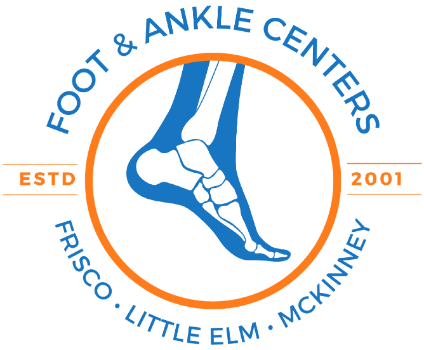Say Goodbye to Painful Ingrown Toenails at Foot and Ankle Centers
Feb 21, 2025 | By: Foot & Ankle Centers of Frisco and Plano
Are you dealing with redness, swelling, or discomfort from an ingrown toenail? Don’t suffer in silence! At the Foot & Ankle Centers of Frisco, Little Elm, & McKinney, we specialize in gentle, effective treatments to relieve pain and prevent future issues. Ingrown toenails are a common foot condition that can affect people of all ages. They occur when the edge of the toenail grows into the surrounding skin, leading to pain, inflammation, and sometimes infection. Understanding the symptoms, causes, and treatment options is essential to managing this condition effectively.
Common symptoms of an ingrown toenail include redness or swelling around your toenail. This is often the first sign that something is wrong. The skin around the nail may appear tender and inflamed, especially along the nail borders where the nail is pressing into the skin. Tenderness or sharp pain in your toe is another hallmark symptom. The pain typically worsens when pressure is applied to the affected toe, such as when wearing tight shoes or walking. This discomfort can range from mild to severe, depending on the extent of the ingrown nail.
Hard skin or drainage near the nail edge can also indicate an ingrown toenail. As the condition progresses, the body may respond by forming granulation tissue, which appears as red, swollen skin around the nail. In some cases, an infection can develop, leading to pus or other drainage from the affected area. Difficulty wearing shoes or walking comfortably is another common issue. The pressure from shoes can exacerbate the pain and swelling, making everyday activities challenging.
Ingrown toenails can worsen if left untreated. The ingrown nail can penetrate deeper into the skin, causing increased pain, swelling, and infection. In severe cases, the infection can spread to the underlying bone, leading to more serious complications. Therefore, it’s essential to seek medical attention if you notice any of these symptoms. Don’t wait for the pain to go away on its own—our expert team at the Foot & Ankle Centers of Frisco, Little Elm, & McKinney is here to help!
Several factors can contribute to the development of ingrown toenails. Improper nail trimming is one of the most common causes. Cutting toenails too short or rounding the edges can encourage the nail to grow into the skin. Wearing tight or ill-fitting shoes that put pressure on the toes can also increase the risk. Additionally, injuries to the toenail, such as stubbing your toe or dropping something heavy on it, can lead to an ingrown nail. Some people are genetically predisposed to this condition due to the natural shape of their nails.
At the Foot & Ankle Centers, we offer a range of treatments to address ingrown toenails effectively. In mild cases, conservative treatments may be sufficient. This can include soaking the foot in warm, soapy water to reduce swelling and soften the skin, allowing the nail to be gently lifted away from the affected area. Applying antibiotic ointment and covering the toe with a clean bandage can help prevent infection. Over-the-counter pain relievers may also provide temporary relief.
For more severe cases or when an infection is present, medical intervention is necessary. Our specialists can perform a minor procedure to remove the ingrown portion of the nail. This procedure, known as partial nail avulsion, is done under local anesthesia to ensure your comfort. The ingrown section of the nail is carefully removed, and the area is treated to prevent recurrence. In cases of chronic ingrown toenails, a procedure called a matrixectomy may be recommended. This involves removing or destroying the part of the nail matrix responsible for nail growth, reducing the likelihood of future ingrown nails.
Preventing ingrown toenails is possible with proper foot care. Here are some tips to keep your toenails healthy:
Trim your toenails straight across, avoiding rounded edges that can encourage the nail to grow into the skin. Use clean, sharp nail clippers and avoid cutting the nails too short. Wear shoes that fit well and provide enough room for your toes to move freely. Avoid tight, narrow, or high-heeled shoes that can compress the toes. Practice good foot hygiene by keeping your feet clean and dry. Change socks regularly and wear breathable footwear to reduce moisture buildup, which can contribute to infections.
If you have diabetes, poor circulation, or a compromised immune system, it’s especially important to monitor your feet regularly and seek medical care promptly if you notice any signs of an ingrown toenail. These conditions can increase the risk of complications, making early intervention crucial.
At the Foot & Ankle Centers of Frisco, Little Elm, & McKinney, we are dedicated to providing compassionate, comprehensive care for all your foot and ankle needs. Our team of experienced specialists will work with you to develop a personalized treatment plan that addresses your specific condition and promotes optimal healing. We understand how painful and disruptive an ingrown toenail can be, and we are here to help you find relief quickly and effectively.
Don’t let an ingrown toenail affect your quality of life. If you’re experiencing symptoms such as redness, swelling, tenderness, or difficulty walking, contact us today to schedule an appointment. Early treatment can prevent complications and help you get back to your daily activities with comfort and confidence. Trust the experts at the Foot & Ankle Centers of Frisco, Little Elm, & McKinney to provide the care you need for healthy, pain-free feet.


0 Comments